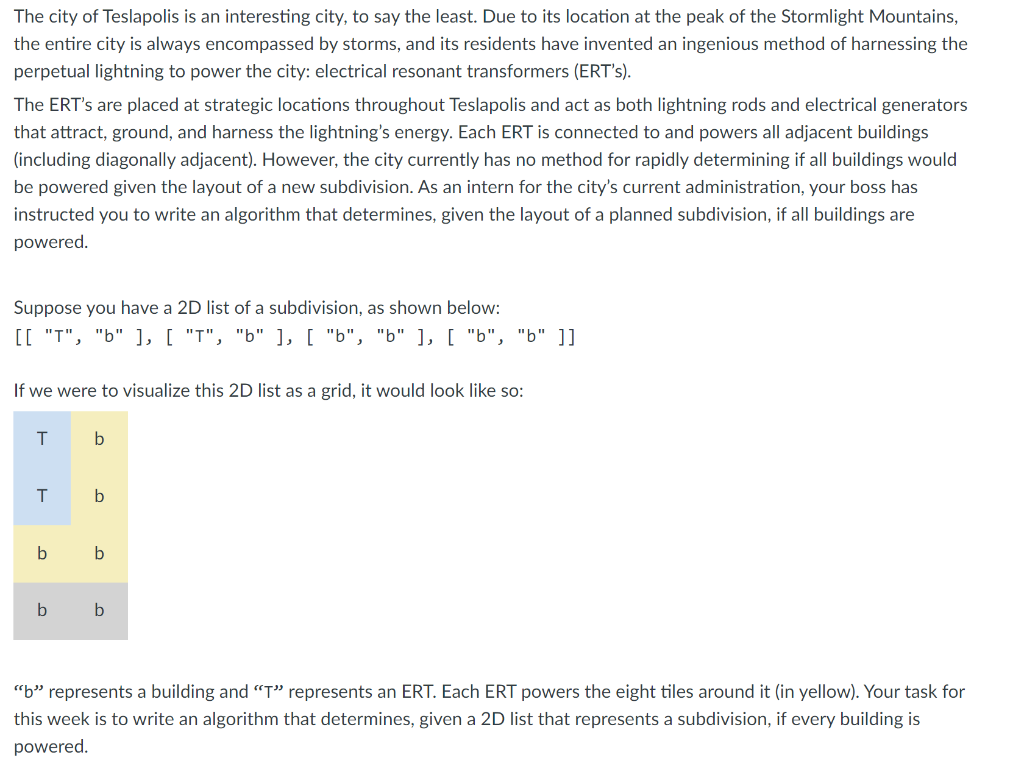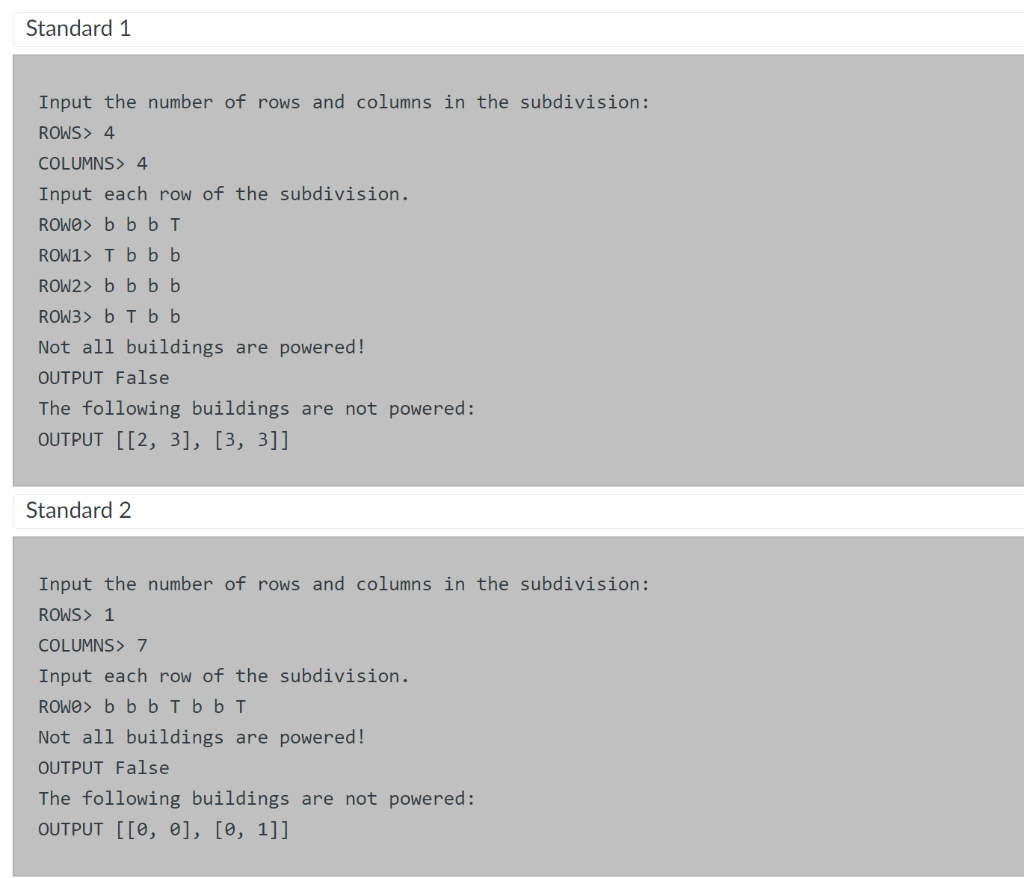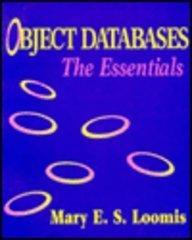Hello! I am confused about this one problem >:(. if you could help me without any def and return statements in python it would be greatly appreciated! thank you!


The city of Teslapolis is an interesting city, to say the least. Due to its location at the peak of the Stormlight Mountains, the entire city is always encompassed by storms, and its residents have invented an ingenious method of harnessing the perpetual lightning to power the city: electrical resonant transformers (ERT's). The ERT's are placed at strategic locations throughout Teslapolis and act as both lightning rods and electrical generators that attract, ground, and harness the lightning's energy. Each ERT is connected to and powers all adjacent buildings (including diagonally adjacent). However, the city currently has no method for rapidly determining if all buildings would be powered given the layout of a new subdivision. As an intern for the city's current administration, your boss has instructed you to write an algorithm that determines, given the layout of a planned subdivision, if all buildings are powered. Suppose you have a 2D list of a subdivision, as shown below: [ [ "T", "b" ], [ "T", "b" ],[ "b", "b" ],["b","b"]] If we were to visualize this 2D list as a grid, it would look like so: "b" represents a building and " T "' represents an ERT. Each ERT powers the eight tiles around it (in yellow). Your task for this week is to write an algorithm that determines, given a 2D list that represents a subdivision, if every building is powered. Example Subdivisions: [ ["b", "b", "b"], ["b", "T", "b"], ["b", "b", "b"] ] True \# The ERT powers all 8 tiles around it. Output is True. b b b [ ["b", "b", "b"] ] False \# There isn't even an ERT. Output is False. \# Unpowered buildings are at [0,],[,1], and [0,2]. b b [ ["b"], ["T"], ["b"] ] True \# The ERT powers the building above it and the building below it. Output is True. [ ["b", "b", "T", "b"], ["T", "b", "b", "b"], ["b", "b", "b", "b"], ["b", "T", "b", "b"] ] False \# Only 2 buildings are not powered, [2,3] and [3,3]. \# Output is False because not every building is powered. Input the number of rows and columns in the subdivision: ROWS >4 COLUMNS > Input each row of the subdivision. ROWO > b b b T ROW1 >T b b b ROW2 > b b b b ROW3 > b T b b Not all buildings are powered! OUTPUT False The following buildings are not powered: OUTPUT [[2,3],[3,3]] Standard 2 Input the number of rows and columns in the subdivision: ROWS >1 COLUMNS 7 Input each row of the subdivision. ROWO> b b b T b b T Not all buildings are powered! OUTPUT False The following buildings are not powered: OUTPUT [[0,],[0,1]] The city of Teslapolis is an interesting city, to say the least. Due to its location at the peak of the Stormlight Mountains, the entire city is always encompassed by storms, and its residents have invented an ingenious method of harnessing the perpetual lightning to power the city: electrical resonant transformers (ERT's). The ERT's are placed at strategic locations throughout Teslapolis and act as both lightning rods and electrical generators that attract, ground, and harness the lightning's energy. Each ERT is connected to and powers all adjacent buildings (including diagonally adjacent). However, the city currently has no method for rapidly determining if all buildings would be powered given the layout of a new subdivision. As an intern for the city's current administration, your boss has instructed you to write an algorithm that determines, given the layout of a planned subdivision, if all buildings are powered. Suppose you have a 2D list of a subdivision, as shown below: [ [ "T", "b" ], [ "T", "b" ],[ "b", "b" ],["b","b"]] If we were to visualize this 2D list as a grid, it would look like so: "b" represents a building and " T "' represents an ERT. Each ERT powers the eight tiles around it (in yellow). Your task for this week is to write an algorithm that determines, given a 2D list that represents a subdivision, if every building is powered. Example Subdivisions: [ ["b", "b", "b"], ["b", "T", "b"], ["b", "b", "b"] ] True \# The ERT powers all 8 tiles around it. Output is True. b b b [ ["b", "b", "b"] ] False \# There isn't even an ERT. Output is False. \# Unpowered buildings are at [0,],[,1], and [0,2]. b b [ ["b"], ["T"], ["b"] ] True \# The ERT powers the building above it and the building below it. Output is True. [ ["b", "b", "T", "b"], ["T", "b", "b", "b"], ["b", "b", "b", "b"], ["b", "T", "b", "b"] ] False \# Only 2 buildings are not powered, [2,3] and [3,3]. \# Output is False because not every building is powered. Input the number of rows and columns in the subdivision: ROWS >4 COLUMNS > Input each row of the subdivision. ROWO > b b b T ROW1 >T b b b ROW2 > b b b b ROW3 > b T b b Not all buildings are powered! OUTPUT False The following buildings are not powered: OUTPUT [[2,3],[3,3]] Standard 2 Input the number of rows and columns in the subdivision: ROWS >1 COLUMNS 7 Input each row of the subdivision. ROWO> b b b T b b T Not all buildings are powered! OUTPUT False The following buildings are not powered: OUTPUT [[0,],[0,1]]









